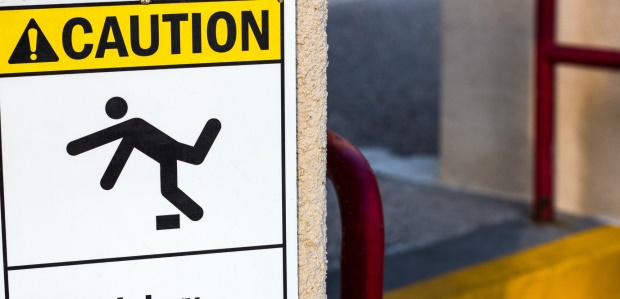
Falls: The Battle with Gravity Can Be Costly
Falls impact more than the individual, so do what is prudent to reduce falls in your world and continue to educate yourself.
- By Melissa Black
- Jul 01, 2018
I have a precious little nephew who knows no fear and does not respect gravity as he climbs to the top of any structure he views as challenging. My dear, yet stubborn, 62-year-old friend thinks nothing of getting on the top step of a 4-foot ladder to clean her ceiling fans by hand. My 83-year-old mother is embarrassed to use her cane, although her vision and balance are compromised. All concern me, and all are unaware of the great risk they are taking. After driving, falls are the No. 1 non-disease killer (2015, National Safety Council fatal facts).
Risking a Disability
Falls are also the leading cause of disability in the United States, accounting for 30.7 percent of disability cases. This is comprised of: falls on the same level at 14.7 percent, falls to a lower level at 9.2 percent, and slip or trips at 3.8 percent (2016, Liberty Mutual). American disability costs due to falls total $50 billion per year, which is approximately $1 billion spent each week. Not only is this a lot of money, but it also reflects a lot of pain and suffering.
Most do not realize that slips and falls from the same surface are great risks. A change of surface (e.g., carpet to smooth floor) is hard for the body to adjust to with grace and balance. In more technical terms, the change of the coefficient of friction changes the grip of your shoes on the surface. This also occurs when liquids or other items are spilled.
Another notorious fall risk is the "trip lip." This lip is often approximately three-fourths of an inch, which makes it hard to see, yet your feet find it all too easy to detect. Trip lips are especially risky to young or older walkers because both often shuffle instead of lifting their feet.
On the Job
Construction workers are the most likely to die on the job from a fall. Falls are the second cause of death for all workers after transportation incidents. The Bureau of Labor Statistics data recorded 800 people died on the job in 2015 from falls.
Dispelling the myth that it takes great heights to cause great injury, 36 percent of on-the-job fatal falls are from less than 15 feet. It is not surprising that the Occupational Safety and Health Administration (OSHA) and American National Standards Institute worked to improve the fall standards. It is also understandable that falls are OSHA's No. 1 cited standard.
We have come a long way with the topic of falls, yet we have a great distance to go. Many who are exposed daily are just beginning to understand the risks. It was not that long ago that fall protection from a structure was a belt around the waist. I wore one of these in the early '80s when I worked at a very large and very safety-conscious chemical company. A fall while wearing that device would have likely broken my back or crushed my internal organs due to the forces and my "safety device." We have advanced to the point where fall protection now requires a body harness to distribute the forces of the fall.
New Fall Technology
However, there are technical and challenging topics to address when using these newer devices and systems. These include calculating fall distances, potential swing radius, hardware, and tie-off points to ensure the integrity of the system will support your falling load. Prompt rescue is necessary due to suspension trauma risk. All these are relatively new concepts to address an age-old concern: gravity.
Falls and the forces that result from them are not new, but the science of studying them and resolving the risks is fairly new and exciting. Education on this and other topics is essential for us to continue as a society.
Falls impact more than the individual, so do what is prudent to reduce falls in your world and continue to educate yourself so you don't fall for anything!
This article originally appeared in the July 2018 issue of Occupational Health & Safety.
About the Author
Melissa Black, MS, CSP, CIH, is an adjunct professor in occupational safety and health sciences at Columbia Southern University. She obtained her master's degree in occupational safety and health from Columbia Southern University, and she holds both a Certified Safety Professional and a Certified Industrial Hygiene designation, as well as many additional certifications. She is the president of MsR3, LLC, a consulting firm. She works with clients in governments and businesses in various capacities to assist with risk reduction and safety performance.
One of the nation's pioneer online universities, Columbia Southern University was established in 1993 to provide an alternative to the traditional university experience. This year, CSU celebrates its 25th anniversary as it continues to offer online associate, bachelor's, master's and doctoral degrees such as business administration, criminal justice, fire administration and occupational safety and health. Visit ColumbiaSouthern.edu or call 877-347-6050 to learn more.